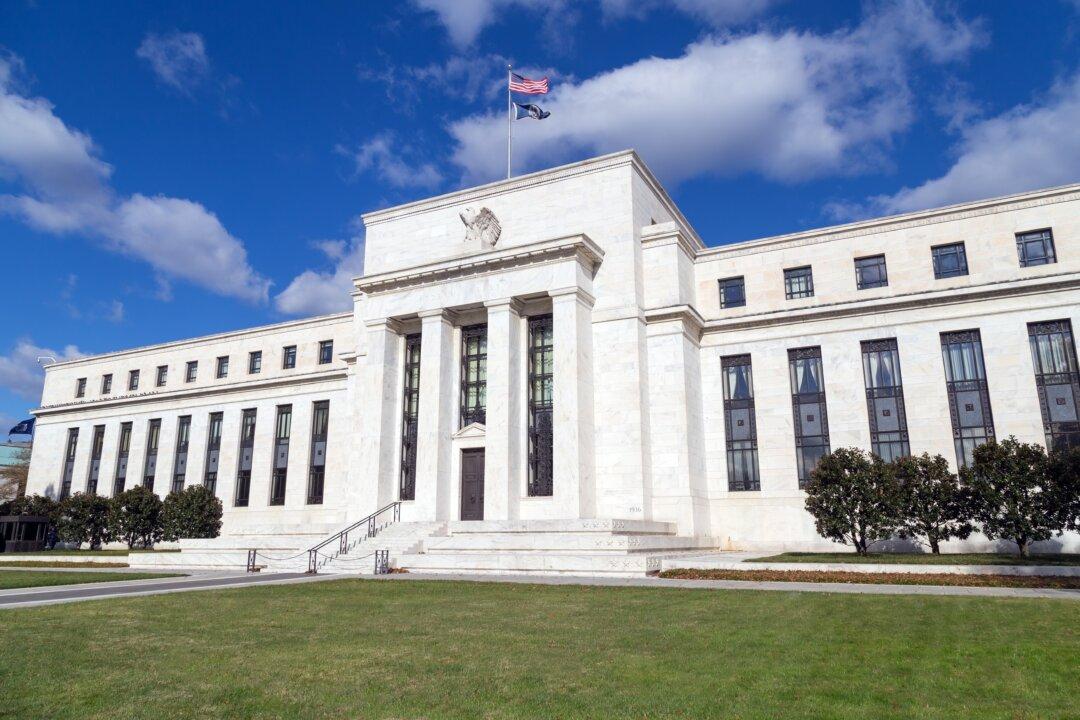The outrageous prices at the grocery store and gas stations—the highest ever recorded and increasing at rates too fast to calculate with precision—are yet more collateral damage from the initial lockdowns two years ago. The story unfolds over two years but the line of causality is direct.
Apparently it’s going to get much worse. I wonder if at some point, no one will remember how this all began. Maybe everyone has already forgotten.
I asked a friend: do you think people understand the relationship between the March 2020 lockdowns and the wild price increases two years later? The answer came: no way.
That surprises me but I also understand. There has been so much flimflam coming from the media and government spokespeople for so long, so many many attempts to demonize and scapegoat.
In addition, for many people, the past 24 months have seemed like one big blur when everything they thought about the world has been blasted to pieces. It’s extremely disorienting. After a while, one can get used to the chaos and just accept it without attempting to account for it. The lines of causality too become blurry.
The latest mess—and this doesn’t even account for the shocking talk of nuclear war that is now in the air—profoundly affects all states in the United States, not just the blue ones that stayed closed much longer than red ones. Red states have felt normal but now they too must deal with incredible price increases in everything plus strange and random goods shortages on the shelves.
Cash and Mattresses
The cash you hold is losing value. Financial markets are volatile, but even when rising, portfolios can’t keep up. Even the best-managed funds are scrambling for returns. Savings seem ever less like savings. Even with cost-of-living increases in salaries and wages, the purchasing power is shrinking day-by-day.The promises of “transitory” inflation turned out to be as credible as the promises to control the virus.
Persistently high inflation becomes a tragedy for the poor and working classes, who are daily astonished at the new terrain of high prices for everything that makes life good. But it is especially awful for the savers. They are all being punished for frugality and exercising good personal stewardship over their resources.
It was not a surprise to any economist that personal savings soared during lockdowns. This is not only due to few opportunities to spend money. That was the least of it. When a crisis hits, risk aversion dominates confidence. The pace at which money changes hands collapses. The cash stays in the mattress. This is due to fear, and it is entirely reasonable.
This boost in savings during a crisis normally prepares the way for recovery. Once it ends, deferred consumption in the form of savings becomes the basis of investment in capital that then becomes the basis of the rebuilding. It’s a natural economic phenomenon. You can call it the silver lining of any crisis. There is recovery and it is built on the real economic behaviors inspired by the crisis itself.
You can see this happening in the data from 2020 in personal savings. It ballooned from 7 percent of income to 33 percent practically overnight. In fact, we’ve never seen anything like this before. It’s a measure of just how awful things became so quickly.
Of course, it was brief but still valuable. Household savings soared 120 percent. Corporate and business savings also showed risk aversion, as they socked away a clean $600 billion in so many months.
Counterfactual: let’s say that “two weeks to flatten the curve” had been real. All restrictions were removed in a fortnight. Everything opened. Congress had done nothing. Everyone wondered why we had behaved so egregiously and then we got to work dealing with the pandemic like intelligent adults. Might we have recovered quickly? Surely so, even if it would be the trauma of a generation.
It was March 27, 2020, and there was a $2.2 trillion spending bill on the table. Congress was going to approve it without even showing up to the Capitol. It was an appalling sight. These lockdowns had already permissioned every privileged person who could work on a laptop to stay home while the working class had to keep up the old routine. Congress was going to throw trillions around the country now without even showing up to a vote.
The Inevitable Inflation
When governments and central banks behave in unbearably stupid ways, it is worth asking whether there might be a point to the madness. That’s how I feel when I look at M2 data from 2020–21. (M1 might be a better way to express this but the Fed changed the definition in May 2020, making the chart inconsistent.)This money printing peaked at a 26 percent rate of increase. Or look at the raw money data (again, we have to use M2. The Fed inspired the addition of some $6 trillion to the supply of money, nearly a dollar-for-dollar match of what the politicians were promising. All appearances of science aside, it was nothing but the crudest deployment of a classic tale of monetary devaluation: print instead of tax.
In raw dollar terms, we’ve seen a 42 percent increase in the money supply in a mere 24 months.
It’s possible that some people at the Fed figured that they would get away with this because they loosened dramatically in 2008, with no substantial effects on prices, despite all predictions. They became arrogant and too sure that the net effect of all quantitative easing is positive or at least neutral.
Plus, the government started dropping checks in people’s bank accounts. Seemed like a gift. It was quickly taken away. It was not only the savings that were wiped out in the subsequent inflation but also the purchasing power of the stimulus checks themselves. These checks worked for a while, until their effective value was essentially stolen by stealth.
The Hunt for Value
The realization of inflationary pillaging tends to dawn slowly and then all at once. In the coming months and years, we are going to see a dramatic change in the psychology of saving. More people will see that it is not worth it. Better to consume now. Live in the moment. Don’t plan for the future. Get rid of the paper as fast as possible before it loses ever more value.That’s how inflationary expectations work: it adds fuel to the fire of devaluation. We aren’t yet seeing much evidence of this yet but it could emerge at any time. This has a cultural impact on whole societies, rewarding short-term consumption over long-term planning. It punishes saving and rewards profligacy.
To be sure, not all the price increases are accounted for with monetary policy. There are supply-chain breakages, shipping snarls, and now cruel sanctions against Russia that we didn’t see even at the height of the Cold War.
Decoupling the causative elements here is an impossible task, and monetary theorists will argue for years about the Fed’s culpability. Theory is beautiful but fitting it to reality does not reveal certainty about what is causing what. But even if you think the Fed is not wholly to blame, and that breakages and market chaos generally account for the lion’s share, government policies still bear responsibility.
It all traces to the fateful March 2020 decision to turn off economic activity as if this would be as easy as shutting off a light switch. Just turn it back on when the virus is gone! It turned out not to be so easy.
Meanwhile, there seems to be no stopping this beast that is eating through savings and currencies, and also the reputation of central banks fecklessly pretending to stop it. The wild swings are being exacerbated by tremendous uncertainty in supply chains and oil resources in particular. The war response is causing absolute havoc not only in oil but all commodity markets.
The pandemic response unleashed several seasons of policy recklessness, destruction, and nihilism, almost as if none of the lessons of the past applied, whether in public health or economics. If we ever emerge from this chaos, historians will surely look back in amazement that so many terrible decisions could have taken place in so many parts of the world and in such quick succession.
That’s a good description of the forces that were unleashed in the name of public health. It generated enormous loss in every area of life. We are still paying the price and will be for years to come. Even in the fog of inflation and war, let us not forget the origin of it all. It is caused by catastrophic decision making at the top.








